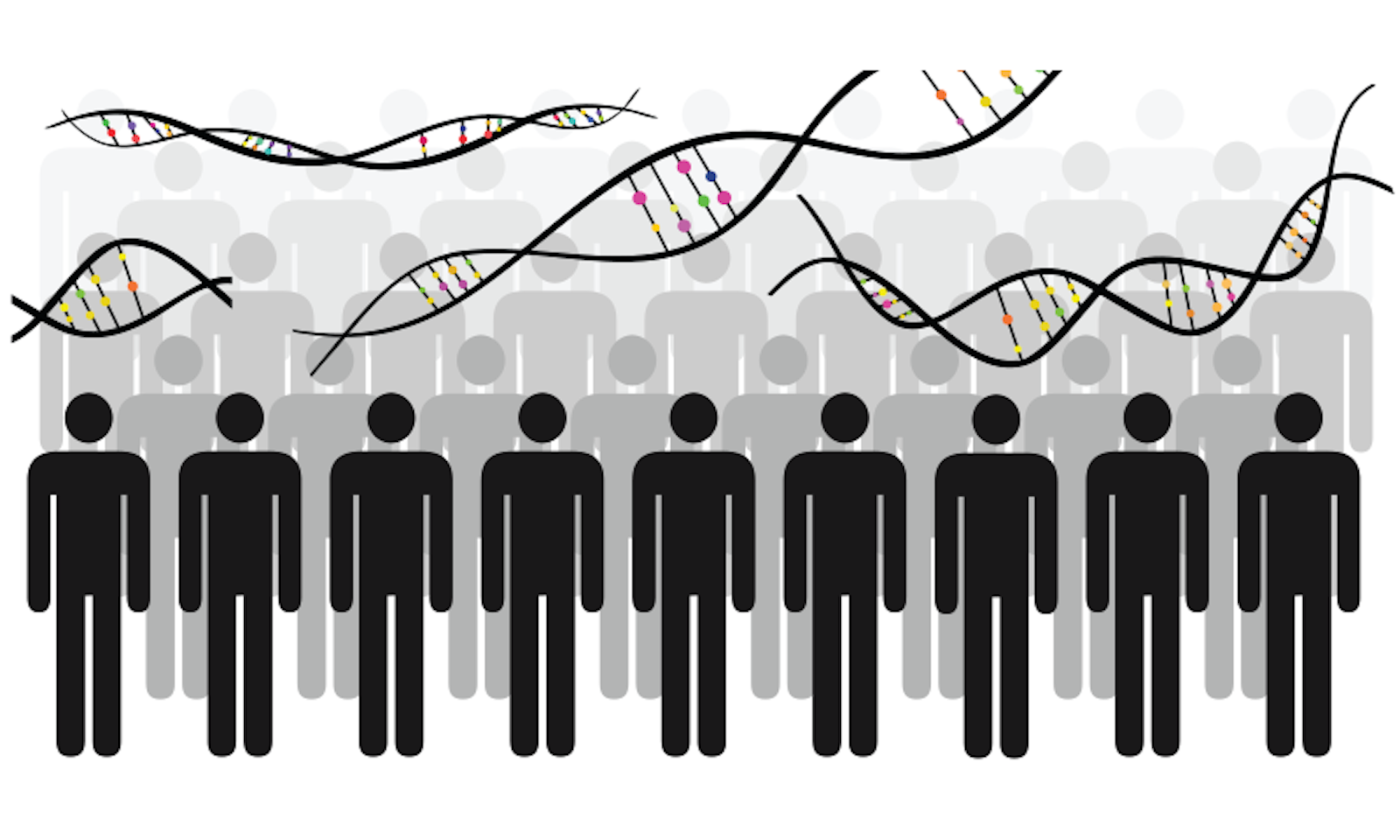American medicine has always gotten “race” wrong. The connection between persons of African descent and western medicine began in the context of slavery. Africans were treated more like livestock than human beings. In the 18th century, medical anatomy progressed because of the availability of African-American bodies for dissection. Surgical procedures were perfected using enslaved people often without the benefit of anesthesia.1
Prior to the 20th century, medicine was more an art than a science. Natural science understood human anatomy and physiology through the lens of special creationism. In the 18th century, non-Europeans were thought to be degenerate compared to Europeans; and in the first half of the 19th century they were thought to be separate creations. For this reason, medicine exaggerated the anatomical and physiological differences that existed between human “races.” Bogus physiological and psychological diseases were invented by leading 19th-century physicians (such as Southern physician Samuel Cartwright’s “dysaesthesia aethiopica”—slaves working in a leisurely way—and “drapetomania”—the insane desire of slaves to run away). By the end of the 19th century, scholars like statistician Frederick Hoffman were convinced that the “Negro” was so infirmed that they would eventually go extinct in America.
There is more genetic variation within the so-called human races than between them.
Things did not improve in the early 20th century. Diseases such as sickle cell anemia were used to support miscegenation statutes to prevent African-American individuals from spreading the disease to whites. The elevated rates of syphilis infections in African-American individuals prompted the United States Public Health Service to conduct an experiment to observe the progression of untreated syphilis in African-Americans. The study was conducted from 1932 to 1972. In reality the Tuskegee syphilis experiment was unnecessary as prior studies of untreated syphilis had been conducted on patients in Sweden. Worse, the study continued for decades after it was discovered that penicillin could treat the disease. The participants (and those they infected) were not offered treatment2 until 1973 (1975 for their wives and children).
The introduction of Mendelian genetics into medicine at midcentury did not improve things either. Diseases were now thought to be the result of single genes. For example, the disease pellagra (which actually results from diets poor in vitamin B3, also known as niacin) was presented by eugenicists as a genetic disease and thus went untreated. As a result, more than 100,000 Americans died (a disproportionate number of them African-American). The higher death rates in “Negroes” were explained by their inherent genetic inferiority.3

Medicine later in the 20th century did little to advance its understanding of human biological diversity and its significance in addressing health—even though the disciplines of biological anthropology as well as evolutionary and population genetics had begun to unravel the false notion that biological races existed within the human species. By the initial publication of the first human genome, in 2003, the consensus within those disciplines was that the human species did not have biological races. This was because it could now be demonstrated that there was more genetic variation within the so-called human races than between them.4
The development of new DNA sequencing technology further demonstrated the genetic unity of our species over the first decade of the 21st century.5 For example, we now know that any two persons drawn at random from anywhere on the globe will share 99.9 percent of their genome. Furthermore, if one were to draw two Africans and compare their genetic distance to an African and a European drawn at random, the African and European would share more of their genome than the two Africans. This is because most of the genetic variability in our species is found in Africa. This is true because our species first evolved in Africa (some 300,000 years ago). No modern humans left Africa until about 100,000 years ago. Most of the genetic variation within our species accumulated during that first 200,000 years.6 In addition, after humans began to spread around the globe, those populations began to lose genetic variation due to small population size (also called founder effect). As a result of these ancient migrations, human biological variation is continuous with geographical distance from Africa.7 During the migration, natural selection resulted in adaptation to a variety of local conditions, including new diets, parasitic diseases, and solar intensity8; but most of the genetic variation within our species resulted from genetic drift (random fluctuation of allele frequency due to small population size). So, while there is genetic variation associated with geography in humans, that variation did not cause the formation of biological races.
Despite the advances in understanding the origin and maintenance of human biological variation, “racial medicine” is still practiced across the U.S. Racial medicine begins with the assumption that human biological races exist and that the differences between these races have clinical significance.9
A 2016 paper alerted the medical profession to the ongoing problem of racial misconceptions in the training of medical students.10 In short, medical students held unsubstantiated beliefs about anatomical and physiological differences between supposed “races.” Many of these students thought that Black skin was thicker than white, that Black individuals age more slowly than white, and that Black nerve endings were less sensitive than white.
Sickle cell anemia is not a “Black” disease.
However, this was just the tip of the iceberg. A recent review of a widely used pediatrics textbook demonstrated that it was rife with racial misconceptions that were being taught as fact.11 (This situation prompted Elsevier, the publisher of one of the most widely used textbooks in pathology, to bring me on board as a consultant for the revision of Robbins and Kumar, Basic Pathology, 10th edition.)
The degree of ongoing confusion in the medical community concerning the disconnect between human biological variation and our socially defined categories of race was made even more clear when I began participating in a series of lectures at leading American medical schools in collaboration with Andrea Deyrup, a member of the pathology department at Duke Medical School. In the past two years we’ve given more than 50 of these lectures.
What we have found in most of these departments is that the prevailing narrative regarding an individual’s health is still one that locates the problem within the genetic attributes and behaviors of their socially defined race.1 This is particularly true when it comes to the health of Black individuals. This is evidenced by the 19th-century models used to address human variation seen in leading medical texts, such as Robbins Basic Pathology, 10th edition and the American Academy of Pediatrics Textbook of Pediatric Care, 2nd edition. The immense scope and the urgency to address this problem is illustrated by the fact that in 2022 the National Academy of Sciences called together a select committee to address how human populations are addressed in genomics and biomedical research. I was asked to speak at the first public meeting of the committee.12 The committee will release a report on its findings in March.
I am often asked the question: If humans do not have biological races, why are there such apparent differences in the prevalence of diseases between purported racial groups? My recent book with Alan Goodman, Racism, Not Race, provides a detailed answer to that question.
First, we need to understand why diseases exist within any organism. Diseases fall into several general categories. Diseases that result from simple genetics vary in prevalence across the globe and are generally rare. This is because mutations that impact evolutionary fitness during development and reproduction are driven to low frequencies by natural selection. Depending upon how bad the resulting condition is, they are expected to exist in populations at the frequency of mutation. The mutation rate in humans is relatively constant across populations. Diseases such as severe immune combined deficiency have simple genetic causes. However, a prevalence higher than expected for such diseases can occur due to genetic drift (a random fluctuation in frequency due to small population size).
As a nation, we can realize that health care should be a right and not a privilege.
Natural selection can also increase the frequency of an early age disease causing allele due to heterozygote advantage. This is when a person carrying one copy of the standard and one copy of the disease-causing allele displays higher evolutionary fitness compared to either homozygous genotype. The case of sickle cell anemia, in which the sickle cell allele in heterozygous condition provides protection against malaria is well known. The variant is found wherever malaria transmission is high (including parts of Africa, as well as the Middle East, India, and southern Europe, including Greece and Italy). Thus sickle cell anemia is not a “Black” disease. We only think of it that way because the enslaved Africans who were brought to America in the Trans-Atlantic slave trade came from malaria zones (West, Central Africa). If those people had come from South Africa (which had very little malaria) we would not suffer from that medical misconception.
The most significant health disparities in the Western world are associated with diseases with complex foundations such as heart disease, cancer, stroke, diabetes, and infant mortality. The prevalence of these diseases is determined by the complex interaction of genes, environment, and chance development effects.
Humans do not differ enough genetically to account for the magnitude of the health disparities we observe in Western societies. This indicates that most of the health disparities we observe result from differential exposure to the biological and physical aspects of the environments that humans live in. For example, lead is a toxic metal that is known to impact, intelligence, behavior, and overall life achievement. In the U.S., studies have found Black children have about twice the amount of lead in their blood compared to white children.13
Our current problem in understanding health disparities does not reside in an absence of the science required to make sense of this ongoing problem. Rather it is generated from the deeply held misconceptions about race and human variation that Americans are marinated in throughout their lives. We as a society have done little to dispel these myths. The status quo of racial medicine is an emergent property of structural racism.
The solutions to eliminating ongoing medical misconceptions and health disparities are both intellectually and morally simple. James Baldwin wrote an essay for The New York Times in 1962 entitled “As Much Truth as One Can Bear.” In it, he wrote, “Not everything that is faced can be changed; but nothing can be changed until it is faced.” The medical community must face the fact that it is still mired in 19th-century notions of race. This is possible to fix, once faced.
The scholarship exists to more effectively train aspiring physicians on the realities of human biological variation and its relation to disease. Medical societies can also consider how their historical barriers to training non-white individuals in medicine can and must be dropped to produce a medical workforce that represents the diversity of the American people. Finally, we as a nation can recognize that adequate health care should be a right, not just a privilege of the rich.
However to achieve these relatively simple feats requires the moral will to do so. That is what we as a nation have sorely lacked. Unless we find it soon, it may not matter, because systems that are organized around social injustice are inherently unstable, and unless we find a way to achieve justice in our socioeconomic systems, a combination of environmental, political, and social catastrophes will combine so that we may no longer exist to worry about finding a solution.14 ![]()
Joseph L. Graves is a professor of biology at North Carolina Agricultural and Technical State University, as well as the author of numerous popular books, including, most recently A Voice in the Wilderness: A Pioneering Biologist Explains How Evolution Can Help Us Solve Our Biggest Problems.
Lead image: magic pictures / Shutterstock
References
1. Graves, J.L. The myth of the genetically sick African. Genealogy 6, 15 (2022).
2. Jones, J. Bad Blood: The Tuskegee Syphilis Experiment: A Tragedy of Race and Medicine The Free Press, New York, NY (1982).
3. Chase, A. The Legacy of Malthus: The Social Costs of the New Scientific Racism Random House, New York, NY (1977).
4. Graves, J.L. The Emperor’s New Clothes: Biological Theories of Race at the Millennium Rutgers University Press, New Brunswick, NJ (2001).
5. Graves, J.L. & Goodman, A. Racism, Not Race: Answers to Frequently Asked Questions Columbia University Press, New York, NY (2022).
6. Nielsen, R., et al. Tracing the peopling of the world through genomics. Nature 541, 302-310 (2017).
7. DeGiorgio, M., Jakobsson, M., & Rosenberg, N.A. Out of Africa: modern human origins special feature: explaining worldwide patterns of human genetic variation using a coalescent-based serial founder model of migration outward from Africa. Proceedings of the National Academy of Sciences 106, 16057-16062 (2009).
8. Fan, S., Hansen, M.E., Lo, Y., & Tishkoff, S.A. Going global by adapting local: A review of recent human adaptation. Science 354, 54-59 (2016).
9. Graves, J.L. & Rose, M.R. Against racial medicine. Patterns of Prejudice 40, 481-493 (2006).
10. Hoffman, K.M, Trawalter, S., Axt, J.R., & Oliver, M.N. Racial bias in pain assessment and treatment recommendations, and false beliefs about biological differences between blacks and whites. Proceedings of the National Academy of Sciences 113, 4296-4301 (2016).
11. Li, A., Deyrup, A.T., Graves, J.L., & Ross, L.F. Race in the reading: A study of problematic uses of race and ethnicity in a prominent pediatrics textbook. Academic Medicine 97, 1521-1527 (2022).
12. National Academy of Sciences, Committee on the Use of Race, Ethnicity, and Ancestry as Population Descriptors in Genomics Research (First Public Meeting, April 4, 2022).
13. White, B.M., Bonilha, H.S., & Ellis Jr., C. Racial/ethnic differences in childhood blood lead levels among children <72 months of age in the United States: A systematic review of the literature. Journal of Racial and Ethnic Health Disparities 3, 145-53 (2016).
14. Graves, J.L. A Voice in the Wilderness: A Pioneering Biologist Explains How Evolution Can Help Us Solve Our Biggest Problems Basic Books, New York, NY (2022).




















